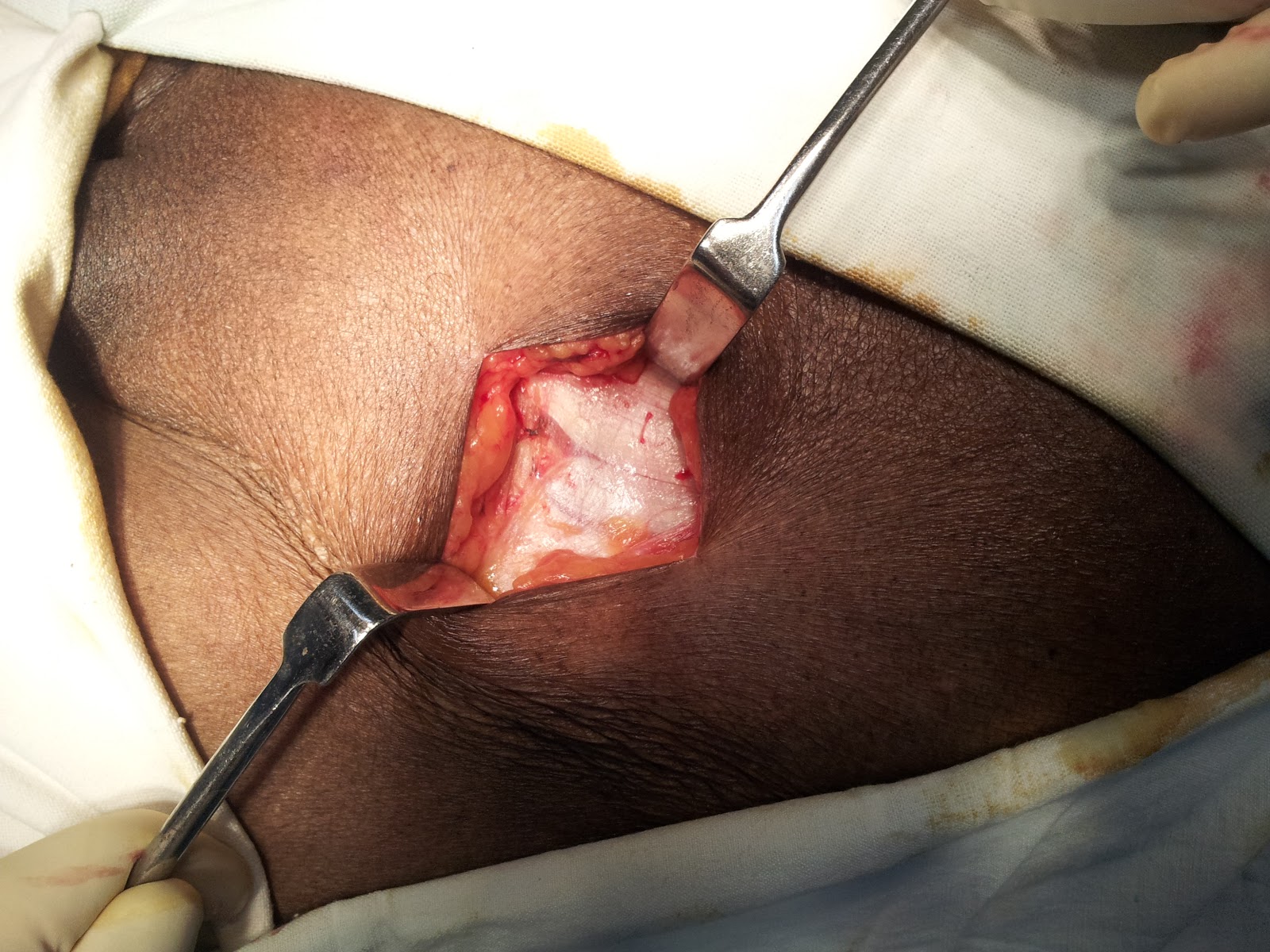Surgical Repair of Indirect Inguinal Hernia
 |
| External Oblique Aponeurosis |
 |
| External Oblique Aponeurosis Opened |
 |
| Inguial Ligament |
 |
| Conjoint Tendon |
 |
| Inferior Epigastric Vessels |
 |
| Indirect Sac Protruding out within the Spermatic Cord |
 |
| Indirect Sac Opened |
 |
| After Mesh Placement |
Hernia is a Latin word which means a tear or rupture.
Hernia is defined as protrusion of viscous in a part or whole through an abnormal opening in the walls of its containing cavity.
Inguinal Hernias Form 75% of the total abdominal wall hernias.
Anaesthesia
o Depends on personal preference of surgeon.
o Laparoscopic Herniorrhaphy-G.A mandated by the pneumoperitonium.
o Otherwise G.A,epidural,spinal ,local or regional anaesthesia can be used.
Position of the patient – Supine
Incision-Oblique incision 1.25 cm above and parallel to the inguinal ligament covering the medial two third. Inguinal ligament is attached to Anterior superior iliac spine to Pubic Tubercle.
Steps of Surgery
Step 1. External Oblique Aponeurosis is defined -The First Landmark
Step 2. External Oblique Aponeurosis is opened along the direction of its fibers and Inguinal Ligament and Conjoint Tendon are defined.
Step 3. Spermatic cord is hooked out from the medial end and is defined up to the deep ring where the inferior epigastric vessels are found.
Step 4. Spermatic cord opened and Hernial Sac dissected out. In indirect hernia, the sac is found inside the spermatic sord.
Step 5. Indirect hernia sac is opened laterally, to prevent injury to the contents of the hernia sac like Urinary bladder.
Step 6. Herniotomy and trans fixation of the sac is done at the level of the deep inguinal ring.
Step 7. Poly propylene mesh is placed in the plane of conjoint tendon and the inguinal ligament
Step 8. Spermatic Cord is placed over the Mesh .
Step 9. External Oblique Aponeurosis is closed
Step 10. Skin and subcutaneous layer closure
No comments:
Post a Comment